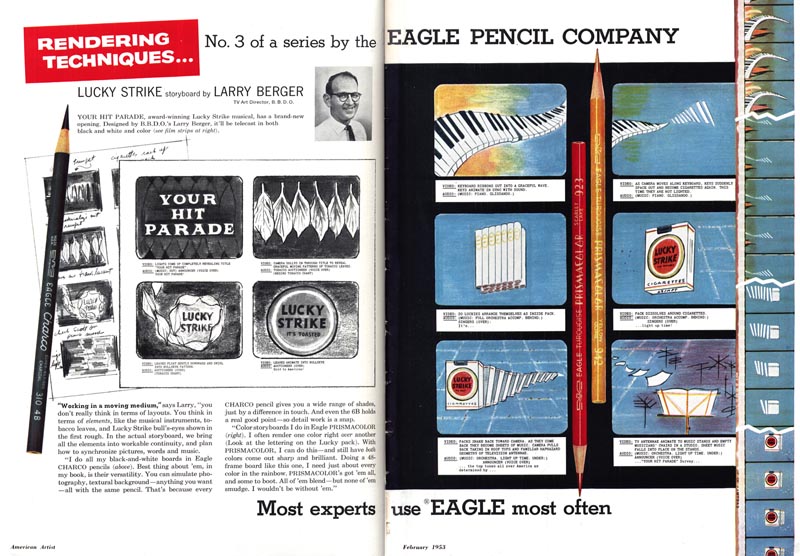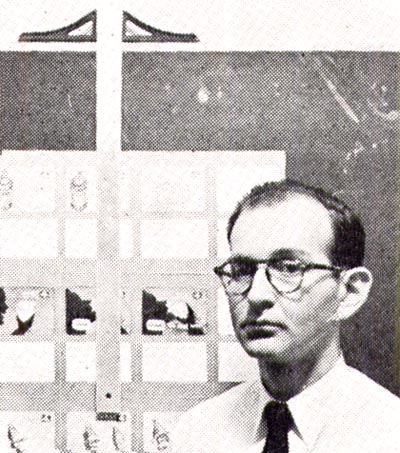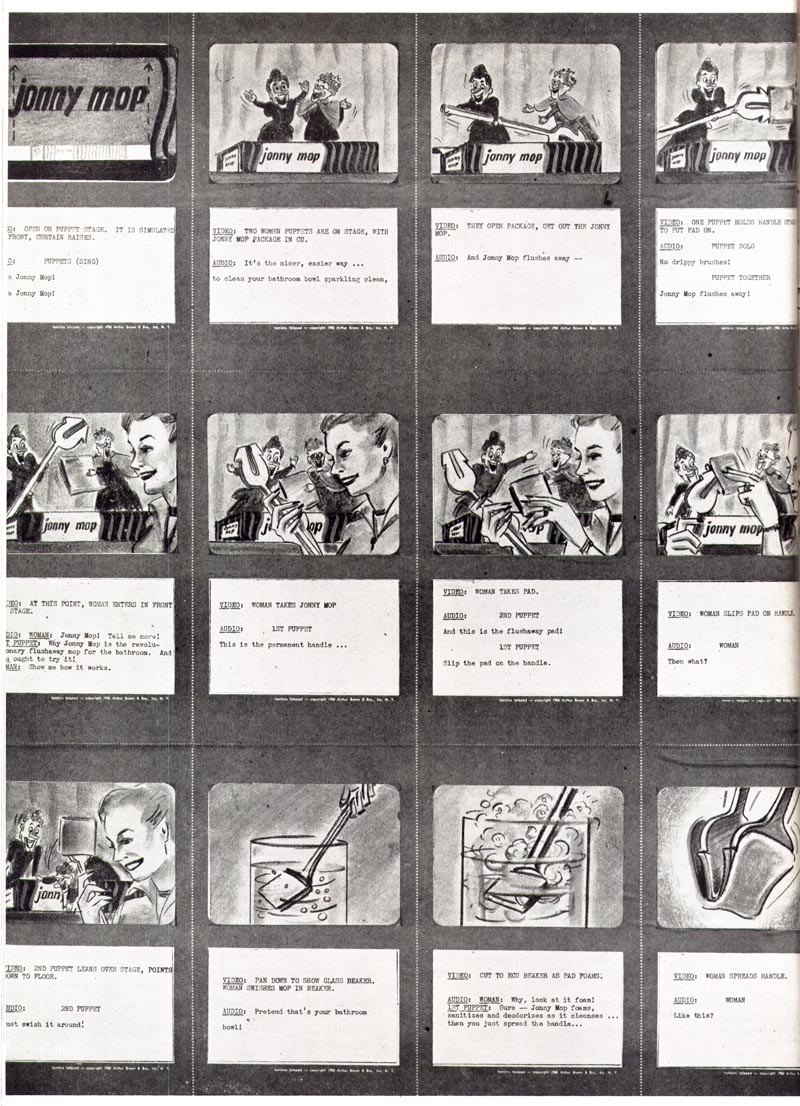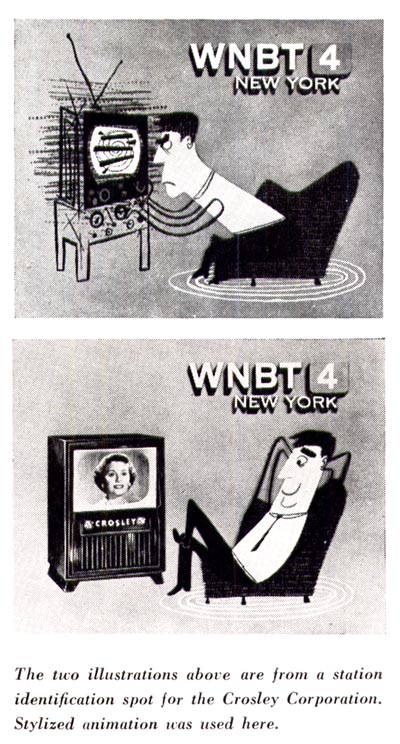
Twenty years ago, hardly anyone outside of those working in an ad agency (or, I suppose, a film studio) knew what a storyboard was. Go back 50 or so years, when television was just becoming America's preferred mass media, and I'll bet that even many artists were unfamiliar with the term.

That might explain why the editors of American Artist magazine had Larry Berger, an art director specializing in TV commercials at BBDO, write an article on the subject for their February 1953 issue.

"Television is the newest and perhaps the most challenging field ever to face an artist," wrote Berger. "It has possibilities and limitations that demand new combinations of skill, training and creative thought."
"The agency's TV art director is primarily responsible for planning the visual appearance of commercials. He does this on a storyboard like the one illustrated below. Now it is not necessary to be a top illustrator to render a storyboard, but it is essential to be able to draw what the camera is expected to record."

"It is essential to be able to visualize the best way of displaying the product - clearly and dramatically, and in the most attractive manner possible. It is necessary to do the same for other elements that will be associated with the product - live actors, animated cartoons, puppets or mobiles. Indicating nebulous images isn't enough because the production of the commercial depends to a great extent on what is indicated on the storyboard. If the board isn't exact in its backgrounds, composition, camera angles, and demonstration techniques, the final commercial is not likely to be much better."


"The artist who comes into television has a good start. The training acquired in an agency art department or studio is invaluable - but it is not enough. In print advertising, a man can specialize in either lettering, illustration, or layout. But the television artist must be a composite of all - and that is but a part of his equipment. Remember: a printed advertisement can carry many elements and still be good; there is relatively no restriction to the time it takes to absorb its message. But the television commercial must always stress brevity and simplicity. It must tell its story in eight seconds, twenty seconds, or at the most one minute. Therefore, though the advertising sense acquired through print media is very helpful, the artist doing TV commercials must acquire a television sense as well. He must develop a sense of timing and correct emphasis, a feeling for visual continuity and for harmonious relationships between moving objects."
"Most important, he must acquire the ability to relate a story that will hold the attention of the audience and sell the product."

Berger concludes, "Since this article is directed to artists, little mention has been made of the other people who work directly with the artist in planning TV advertising. This does not mean that their jobs are less important. Television is no one-man operation. What the TV artist can contribute towards better television commercials, what he can innovate in the field of production techniques, will largely determine his future."

"It can, I think, prove to be the most fruitful profession an artist ever found himself in."
It would be interesting to hear from some storyboard artists today if they feel Larry Berger's assessment of their career choice rings true.
No comments:
Post a Comment